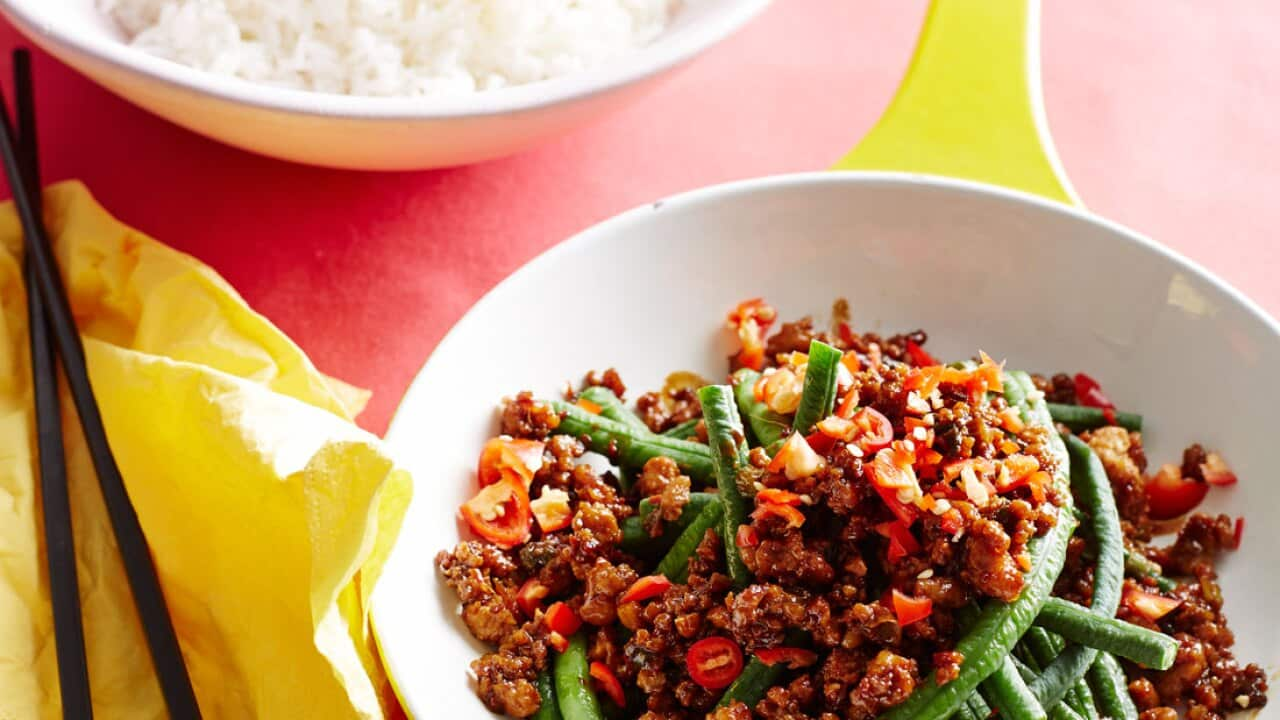For all the diversity in this world, there are still a few food techniques that are ubiquitous across civilisations. After all, the base need is the same: make your supplies last as long as possible. The obvious answer? Preservation. And salt-curing is one of the oldest techniques in the book - after all, what can be simpler than covering your excess meat in salt and letting it sit until you're ready to consume?
The Chinese have their own system in addition to the salt-and-meat equation. They also time the curing of the meat to the seasons - the initial salting process starts in winter, which provided the cool temperatures needed before the invention of refrigeration. The warmer months that follow are then used for fermentation and drying before the cycle begins again for the next batch.
When travelling through areas like Hong Kong, China, and Southeast Asia, you can sometimes find locally made cured meats for sale with all the dried goods (like dried fish maw and fried tendons).
And if you feel a bit overwhelmed by the raw ingredient, you should get very excited when you see this sign at a restaurant:
Because you just know that you're in for a real treat.
“Waxed meats" (腊肉)
La rou, as it's known in Chinese, is often translated into "waxed" meats and is a bit of a misnomer. After all, the word 腊 (la) is the same sound and similar looking as 蜡 (la) used to describe a wax candle, for example, so shouldn't it translate to the same thing? Well, it turns out that this suffers from a bit of a "refried bean" situation - the la in terms of cured meat refers to the hunting season of the ancestors, and so the meat cured during that time took on the name.
If you were to walk into a shop and ask for la rou, however, you might be met with confused looks - la rou refers to a broad category of cured meats, and can refer to everything from duck, to sausages to rat (thought the latter might be a bit harder to find).
Unlike Chinese ham (more about that later), the cured duck (腊鸭) is used as more of a main ingredient than purely for seasoning. Lap mei fan (腊味饭) for example, is a Cantonese favourite during Chinese New Year that arranges chopped cured duck legs over the rice as it steams so that it warms and coats the rice with salty rendered fat. An addition of steamed greens on the side and you've got a comforting reunion dinner staple for many Chinese families.
Of course, besides whole cured pieces of meat (a luxury for the ancestors), sausages are sure to make an appearance.
There are two main types of sausages. The regular type, which has large pieces of fat (much like the cubes of fat throughout quality chorizo), and pork meat seasoned with soy sauce, sugar, pepper, Chinese wine and any other regional variations. These are then hung and dried until firm, and used as a kitchen staple to add flavour and fat into dishes like stir-fries, fried rice and .
The other type of sausage is a liver sausage. Think Chinese sausage, but made with liver instead of pork meat.
What type of liver, you ask? Well, it ranges from pork to duck, and even goose! Each curing master has his own speciality, and the result is a gamier, darker, softer-textured sausage that demands more attention in any dish you decide to use it in.
Salt-cured Chinese hams have been in production since the Tang Dynasty (618-907AD). First records appeared in the book Supplement to Chinese Materia Medica by Tang Dynasty doctor Chen Zangqi, who claimed ham from Jinhua was the best. Pork legs were commonly salted by soldiers in Jinhua to take on long journeys during wartime, and it was imperial scholar Zong Ze who introduced it to Song Dynasty Emperor Gaozong. Gaozong was so enamoured with the ham’s intense flavour and red colour he named it huo tui, or ‘fire leg’.
Unlike the duck, Chinese ham is considered too salty to have in anything larger than small, thin slices. At most, it's layered sparingly to season seafood and vegetables and steamed, and otherwise, it lends a salty porky kick to stir-fries and sauces.
Chinese ham can be quite hard to find outside of Asian countries, but the other cured meats are definitely worth experimenting it. Use it in your char kway teow (as mentioned above, throw in a few slices to ...
Whatever you choose, it will definitely provide instant layers of flavours to your weeknight cooking.
Bask in a Chinese food bounty like no other in Adam Liaw's brand-new series airing 7.30pm Wed nights on SBS, with an encore Sun 9.30pm on SBS Food (Channel 33) and then after broadcast via Join the conversation #DestinationFlavour on Instagram , Facebook and Twitter . Check out for recipes, videos and more!
Destination Flavour China is sponsored by Cathay Pacific. For more information, please visit 

Source: Cathay Pacific






